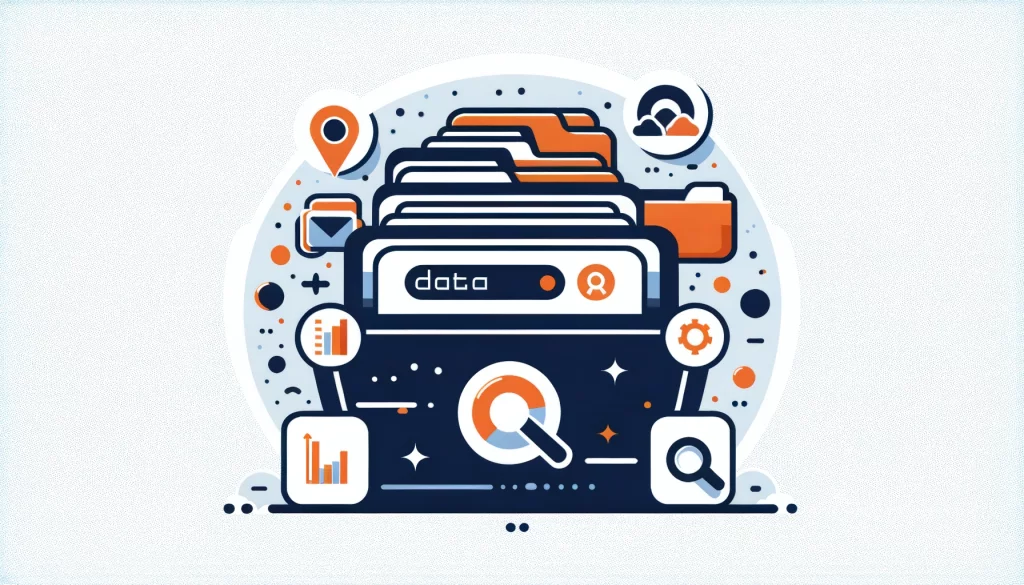
Data Catalog

A data catalog is a powerful tool that helps organizations organize, understand, and leverage their assets. This article will discuss catalogs, how they function, and why they are crucial for organizations looking to maximize their resources.
What is a Data Catalog?
At its core, a data catalog is an organized inventory of a company’s assets.
The system displays all the information in one location within a company. This includes details such as the source of the information, its type, quality, and usage.
By creating a comprehensive data catalog, organizations can make their information more discoverable, understandable, and usable.
Think of a catalog as a library catalog for your information.
A catalog helps you search for a resource by its name, description, tags, and other metadata. This is similar to how a library catalog helps you find books by title, author, or subject.
It gives you one place to search for all your information, so users can easily find what they need.
Catalogs vs. Inventories
While the terms “data catalog” and “data inventory” are often used interchangeably, they are not the same thing.
An inventory is a component of a catalog that lists all the assets available within an organization. It’s essentially a record of what resource exists and where it’s located.
On the other hand, a catalog is a more comprehensive system that includes inventory, metadata management, search capabilities, and governance features.
It provides context and meaning to the info, making it more than just a list of assets.
The Importance of Data Mapping
Another important concept related to data catalogs is mapping. Mapping is the process of matching fields from one source to another.
This is an important part of combining resources from different systems into one catalog.
For example, let’s say you have customer details stored in two separate databases. One database uses the field name “customer_id” to identify unique customers, while the other uses “cust_num”.
Mapping would involve creating a link between these two fields, so that the catalog knows they refer to the same thing.
When to Implement a Data Catalog
So, when should an organization implement a catalog? The short answer is: as soon as possible.
Starting early, even with limited information, can help establish good management practices from the beginning.
That said, the need for a catalog becomes more pressing as the volume and complexity of your data grows.
If you have multiple sources, a large number of users, or complex governance requirements, a data catalog becomes essential.
Benefits of a Data Catalog
Implementing a catalog can bring numerous benefits to an organization. Here are a few of the key advantages:
Improved Data Discovery
One of the main benefits of a data catalog is that it makes resources more discoverable. Users can easily find information with a centralized, searchable interface, even if they are unsure of its location.
This can save a tremendous amount of time and effort, particularly in large organizations with many sources.
For example, let’s say a marketing analyst needs to find clues on customer purchase history.
Without a catalog, they would have to search through many different sources to find the information they need.
With a data catalog, they can simply search for “customer purchases” and get a list of all relevant assets.
Better Data Understanding
A data catalog also helps users understand the info available to them.
A catalog helps users decide if a dataset is right for them by giving information and details about each asset. The catalog provides context and metadata for each asset. This information can help users understand if the dataset meets their needs.
For instance, a catalog might include information about a dataset’s update frequency, quality score, or business owner.
This information can help users assess the reliability and relevance of the data for their specific use case.
Increased Usage
When a resource is easier to find and understand, it’s also more likely to be used. A catalog can help break down silos and encourage sharing across an organization. This can lead to better decision making, as users have access to a wider range of insights.
Enhanced Governance
Data catalogs also play a key role in governance.
A catalog helps keep track of assets and makes sure information is used correctly according to rules and policies.
For example, a data catalog can help enforce access controls, ensuring that sensitive information is only accessible to authorized users.
It can also help track lineage, showing how data flows through different systems and processes.
Real-World Examples
To illustrate the power of data catalogs, let’s look at a couple of real-world examples.
Example 1: Spotify
Spotify, the popular music streaming service, uses a data catalog to manage the massive amount of data it collects on user listening habits.
The catalog includes metadata about each song, such as its artist, genre, and play count, as well as user details, such as playlists and favorite songs.
By cataloging this information, Spotify is able to create highly personalized music recommendations for each user.
The data catalog also helps Spotify’s analysts find the data they need to develop new features and insights.
Example 2: Airbnb
Airbnb, the online marketplace for lodging and tourism activities, uses a catalog to manage resources from its platform.
The catalog includes resources on listings, bookings, users, and reviews, as well as metadata about each dataset.
By making this data discoverable and understandable through a catalog, Airbnb empowers its employees to make decisions.
For instance, analysts can easily find info to help optimize pricing strategies, while machine learning engineers can access resources to train models that improve the user experience.
Challenges and Best Practices for Implementing Data Catalogs
While the benefits of catalogs are clear, implementing one is not without its challenges. One of the main challenges is gathering all the necessary metadata to populate the catalog.
This can be a time-consuming process, particularly for organizations with a large number of assets.
Another challenge is keeping the catalog up-to-date. As new data is created and existing changes, the catalog needs to be continually updated to remain accurate and relevant.
To overcome these challenges, there are several best practices organizations can follow:
- Start small and iterate: Rather than trying to catalog all your resources at once, start with a small subset and gradually expand over time.
- Automate where possible: Use tools and scripts to automatically capture metadata and keep the catalog updated.
- Involve data owners: Engage the people who create and manage info in the cataloging process to ensure metadata is accurate and complete.
- Make it usable: Ensure the catalog has a user-friendly interface and relevant search capabilities to encourage adoption.
The Future of Data Catalogs
As data continues to grow in volume and importance, the role of catalogs will only become more critical.
In the future, we will see them become smarter and more automated, using machine learning to find and categorize assets.
We may also see a move towards more decentralized catalogs, with organizations sharing metadata across company boundaries to enable broader discovery and collaboration.
Conclusion
Catalogs are no longer a nice-to-have but a necessity. By providing a centralized, searchable view of a company’s assets, catalogs can help unlock the full potential of data.
Investing in a data catalog can benefit businesses of all sizes. It can improve discovery, understanding, usage, and governance.
By following best practices and starting early, organizations can lay the foundation for the future.
